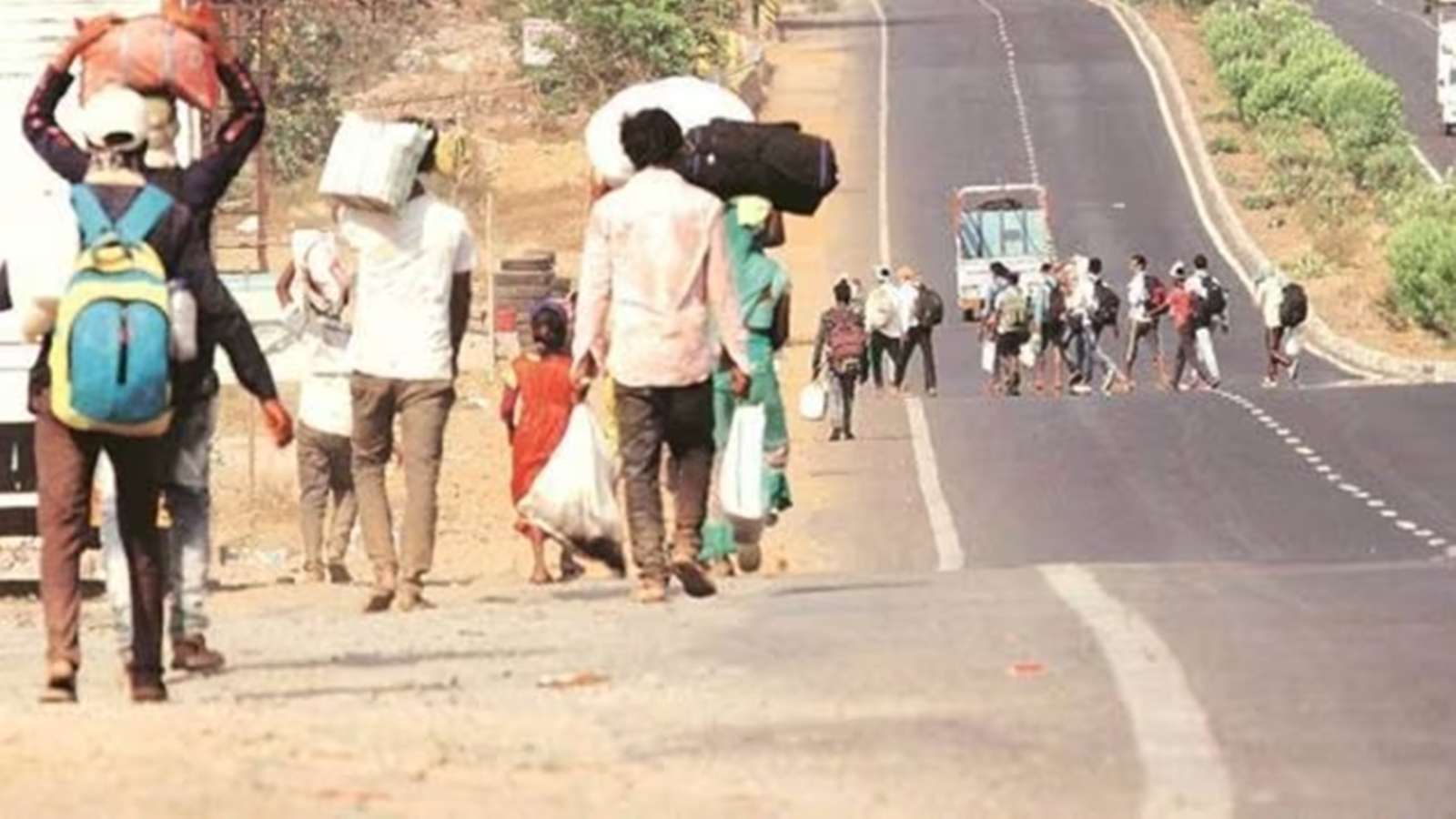The share of India’s population living in multidimensional poverty is estimated to have fallen to 11.28 per cent in 2022-23 from 29.17 per cent in 2013-14, according to a discussion paper released by NITI Aayog on Monday. In absolute numbers, NITI Aayog estimates a total of 24.82 crore people escaped multidimensional poverty in the last nine years.
States like Uttar Pradesh, Bihar, Madhya Pradesh, and Rajasthan recorded the sharpest decline in the number of people classified as poor based on the Multidimensional Poverty Index (MPI), which considers twelve different indicators of poverty included under three broad dimensions, namely health, education, and standard of living.
The discussion paper also notes that the severity of deprivation declined at a slightly lower rate between 2015-16 and 2019-21 compared to 2005-06 and 2013-14.
Severity of deprivation measures deprivations the average multidimensionally poor person suffers from. At the same time, reduction of deprivation was faster after 2015-16 in terms of reduction in share of MPI poor out of total population compared to the decade before, owing to a lesser number of years. In 2005-06, the share of MPI poor in India’s total population was 55.34 per cent. The discussion paper, which uses previously released MPI data based on National Family Health Surveys (NFHS) conducted in 2015-15 and 2019-21, also uses NFHS-3 data from 2005-06 to understand long-term poverty trends.
Based on these three NFHS datasets, NITI Aayog estimated the share of MPI poor in the years 2013-14 and 2022-23 with technical inputs from Oxford Policy and Human Development Initiative (OPHI) and United Nations Development Programme (UNDP). The discussion paper was released by NITI Aayog Member Prof. Ramesh Chand in the presence of NITI Aayog CEO BVR Subrahmanyam.
Prof. Chand noted that without the impact of the coronavirus pandemic, the share of MPI poor in 2022-23 would have been much lesser. The paper also notes that it “may not fully reflect the impact of Covid on the economy” as part of NHFS-5 data collected between 2019-21 was collected before the pandemic. BVR Subrahmanyam added that India is likely to achieve Sustainable Development Goals (SDG) Target 1.2, which calls for reducing “at least by half the proportion of men, women and children of all ages living in poverty in all its dimensions according to national definitions” much ahead of 2030.
As per the paper, indicators in the standard of living dimension showed highest levels of deprivation in 2005-06. For instance, 74.4 per cent of the population was deprived of cooking fuel in 2005-06, which fell to 58.47 per cent in 2015-16, and further to 43.9 per cent between 2019-21. Similarly, 70.92 per cent of the population was deprived of adequate sanitation facilities in 2005-06, which reduced to 51.88 per cent in 2015-16, and further to 30.93 per cent between 2019-21.
The sharpest decline between two periods was recorded by the indicator measuring deprivation of access to bank accounts, which fell to 9.66 per cent in 2013-14 from 58.11 per cent in 2005-06.
According to the estimated share of MPI poor in 2013-14 and 2022-23, Bihar recorded a 53 per cent drop from 56.3 per cent share of MPI poor in 2013-14 to 26.59 per cent in 2022-23. Jharkhand also recorded a 50 per cent drop from 47.13 per cent share of MPI poor to 23.34 per cent. Uttar Pradesh, which had a lesser share of MPI poor in 2022-23 than Bihar, Jharkhand, and Meghalaya, recorded a decline to 17.4 per cent from 42.59 per cent in 2013-14.
India’s definition of multidimensional poverty is measured using twelve indicators including nutrition, child & adolescent mortality, maternal health, years of schooling, school attendance, drinking water, electricity, housing, and assets. MPI seeks to measure poverty in a more holistic manner as opposed to solely relying on income levels to assess deprivation.
